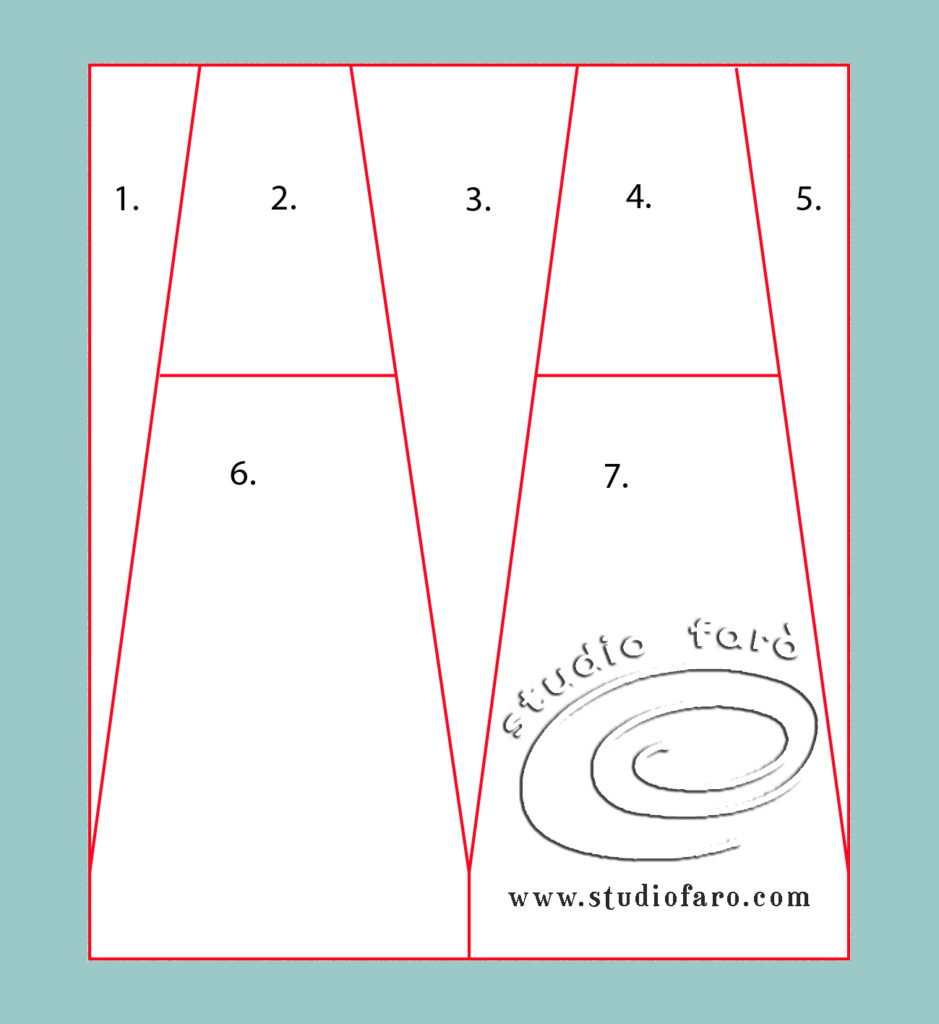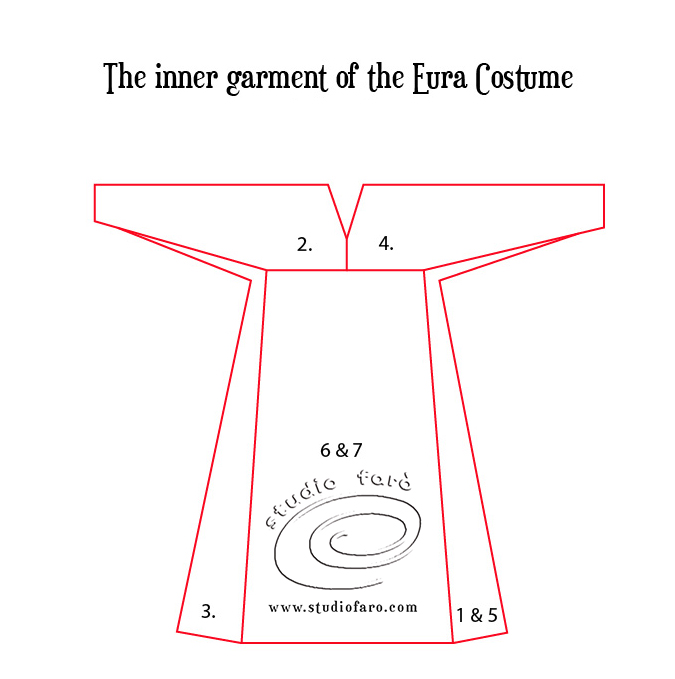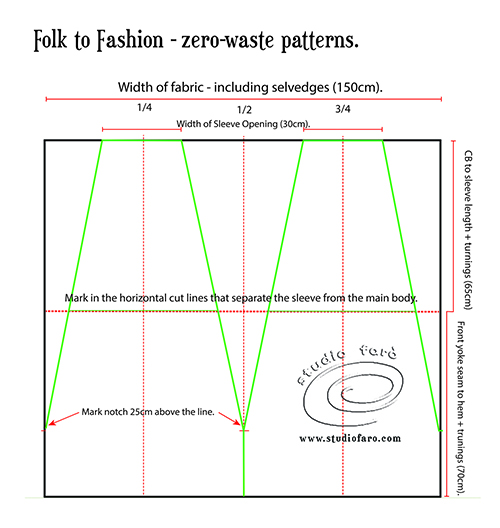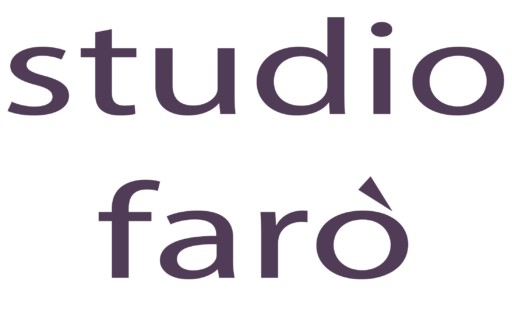13 Jan Folk to Fashion – Zero Waste
Last weekend’s #PatternPuzzle was a little different from our usual pattern shapes. From the conversation you can see that some pattern pieces are obvious and some not so much. The self-drafted image below is one of the most effective examples I have come across of zero-waste pattern making, typical of a lot of folk costume construction.

First glance at the pattern diagram is a little confusing until you see the garment sketch set out below. What’s clever in this pattern plan is how the one simple shape is used for the sleeve, yoke, and neckline. The proportions in this sketch suggest the garment is most likely full length.

What did fascinate me about the original pattern plan is how all the shapes fit so neatly inside the rectangle, using 100% of the fabric and yet they fit together to make a wearable garment. My challenge was to find out if the idea could be used to produce a garment that we would wear today. How can this clever piece of zero-waste design be used in current fashion?
The loose tent-like shape is not that different from many of the fashion shapes we are seeing on the catwalk at the moment. So I decided to see if I could alter the plan to make a tunic length top, with a three-quarter sleeve that you might wear over skinny jeans.

The measurements I used to draft up the diagram were:
- Full length of the top *(84 + 2 + 4 = 90cm).
- Front length from yoke seam to hem (65 + 1 + 4 = 70cm)
- And the length of the sleeve pattern measuring from the CB line, across the back and down the sleeve length *(59 + 2 + 4 = 65cm).
- Sleeve opening (28 + 2 = 30cm)
- And the width of the fabric (150cm).
*When making these calculations it is important to include all turnings (1cm seam and 4cm hem allowances).

I plotted the pattern up on 1cm graph paper and discovered that the inversion on the pattern pieces works to match the side seam godet into the body panels no matter what length you want your tunic or your sleeve length. Use your own measurements or follow the diagram above.

As soon as I’d worked out the measurements on paper I tore off a 135cm piece of cotton voile to make my first toile. Join me later in the week if you would like to see the results.

You’ll find the first sample making post here: Folk to Fashion – First Sample
And you’ll find all the sizing detail here: Folk to Fashion – Managing Size Issues.

Enjoy! 🙂
Take this moment to sign up for my fabulous newsletter! Every month or so I send an email newsletter with new website content and always, always an enormous discount code for all my sewing patterns, garment blocks and pattern making instructions.
This discount code is for subscribers only. Don't miss out!


Coco
Posted at 01:56h, 26 FebruaryIs godet 2 pieced on center?
Studio Faro
Posted at 12:55h, 26 FebruaryHi Coco, thanks for dropping by.
The godet is in the sides of the garment. One side is one whole piece and the other side is two pieces seamed together.
Let me know if you have any other questions. 🙂